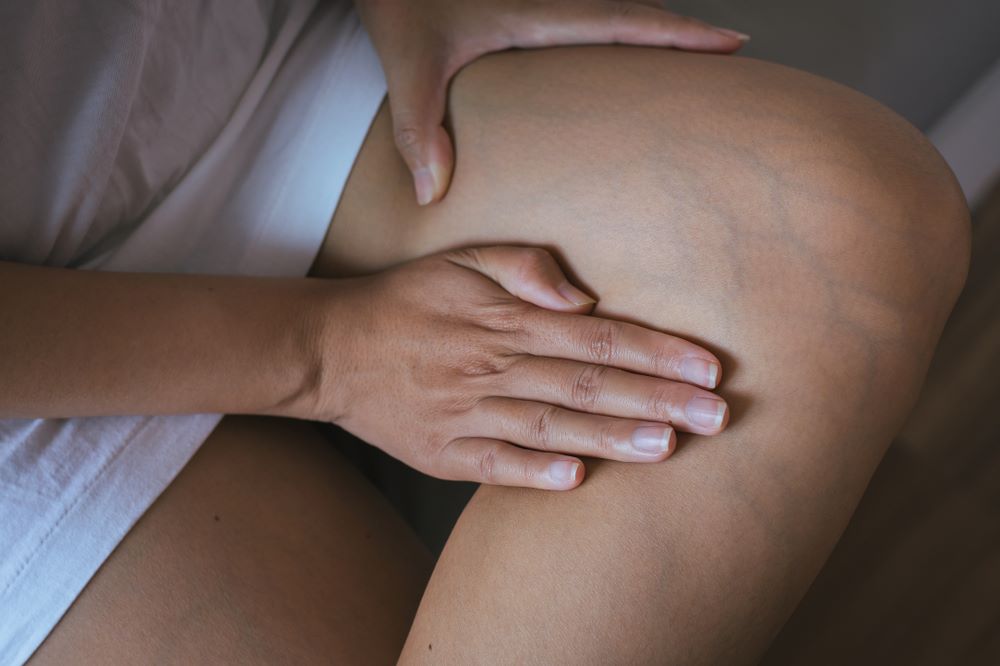The Vascular Clinic provides treatment for all types of venous disease, including chronic venous insufficiency, varicose veins, and spider veins. Our physicians provide these services in Baton Rouge, as well as the surrounding areas. Most procedures can be completed in our state of the art office, but are also offered in a hospital setting or an outpatient surgery center.
What is venous disease?
Chronic venous insufficiency (CVI) is a common cause of leg pain and swelling and is commonly associated with varicose veins. It occurs when the valves of the veins do not function properly, and the circulation of blood in the leg veins is impaired. CVI can be caused by damaged valves in the veins or vein blockage. Both may be a result of deep vein thrombosis (DVT) or blood clots in the deep veins of the legs. Over time, CVI may result in varicose veins, swelling and discoloration of the legs, or the development of ulcers near the ankles. Other symptoms include itching or thickening of the skin.
Vein problems are among the most common chronic conditions in North America
Vein problems are among the most common chronic conditions in North America. In fact, more people lose work time from vein disorders than from artery disease. It is estimated that CVI may affect up to 20% of adults, and by age 50, ~40% of women and ~20% of men have significant leg vein problems. In addition, roughly 25 million Americans have varicose veins.
Causes
The cause of CVI is related either to poorly functioning vein valves or blockage in the veins. Vein valves are designed to allow blood to flow against gravity from the legs back to the heart. When the valves fail to close properly, gravity wins and the flow reverses. This is called venous reflux. Vein valves may fail to close due to:
- Vein wall weakness that causes the vein to enlarge, so that the valves cannot close
- A history of blood clots or deep vein thrombosis in the vein, which damages the valve
- An absence of vein valves since birth (due to a congenital condition)
Varicose veins are often hereditary and generally occur in several members of the same family. Less commonly, varicose veins may develop after a trauma or injury.

Regardless of the cause, defective valves cause a buildup of pressure of the blood in the leg, leading to venous hypertension (high blood pressure in the vein). This may result in enlargement of the varicose veins and an increased likelihood of other symptoms such as swelling, skin changes and ulcers at the ankles or lower leg. Valve failure and venous reflux can also occur in the veins that are unseen, such as the saphenous veins (which run from the foot to the thigh) or in the deep veins. Reflux in these veins is often the underlying cause of painful varicose veins.
Venous reflux is a condition that is progressive. If left untreated, it can worsen and cause more advanced symptoms of CVI. On occasion, the cause of the problem is not even in the legs, but in the pelvis. Here, blockage of the veins may severely aggravate the symptoms of varicose veins, thus requiring separate treatment.
Symptoms
Varicose veins may be entirely symptom free and cause no immediate health problems. However, when varicose veins are associated with CVI, the most common sign is ankle and foot swelling that progress up the lower leg. Other skin changes in the lower leg that commonly occur include discoloration, eczema, scarring or hard, thickened skin and ulceration.
When symptoms are present the most common are heaviness or fullness, aching, restlessness, tiredness, fatigue, pain, throbbing, burning, itching and muscle cramping. In advanced cases, breakdown of the skin may cause bleeding from varicose veins, and large varicosities may develop blood clots, a condition called superficial phlebitis or thrombophlebitis. If you experience any of these symptoms, you should seek treatment from a vascular surgeon. Do not ignore these symptoms.
If you experience any of these symptoms, you should seek treatment from a vascular surgeon. Do not ignore these symptoms.
Risk Factors
The most important factors leading to the development of chronic venous insufficiency and varicose veins include:
- Family history
- Increasing age over 30
- One or more blood clots in superficial or deep veins
- Female gender (although varicose veins occur nearly as commonly in men)
- Multiple pregnancies
- Prolonged standing
- Heavy lifting
- Limited physical activity, high blood pressure and obesity have also been linked with the presence of varicose veins in women
Diagnosis
CVI is primarily diagnosed by physical examination. The most accurate and detailed test, however, is a venous duplex ultrasound exam. This provides an ultrasound image or picture of the vein so that any blockage caused by blood clots or improper vein valve function can be detected. These diagnostic tests are painless. The physician examination and ultrasound can be completed during the same office visit by our physicians.
Treatment
The treatment of CVI involves both medical and surgical treatments, such as:
- Diet and lifestyle
- Avoid prolonged standing or sitting
- Elevate the feet above the thighs when sitting and above the heart when lying down to reduce swelling
- Structured exercise such as walking to strengthen calf muscles
Contact us today to make an appointment to find out more about treatment options for venous disease in Baton Rouge and the surrounding areas.
Sources
- What is Chronic Venous Insufficiency (CVI)?. From Vascular Cures. Accessed May 23, 2020.
